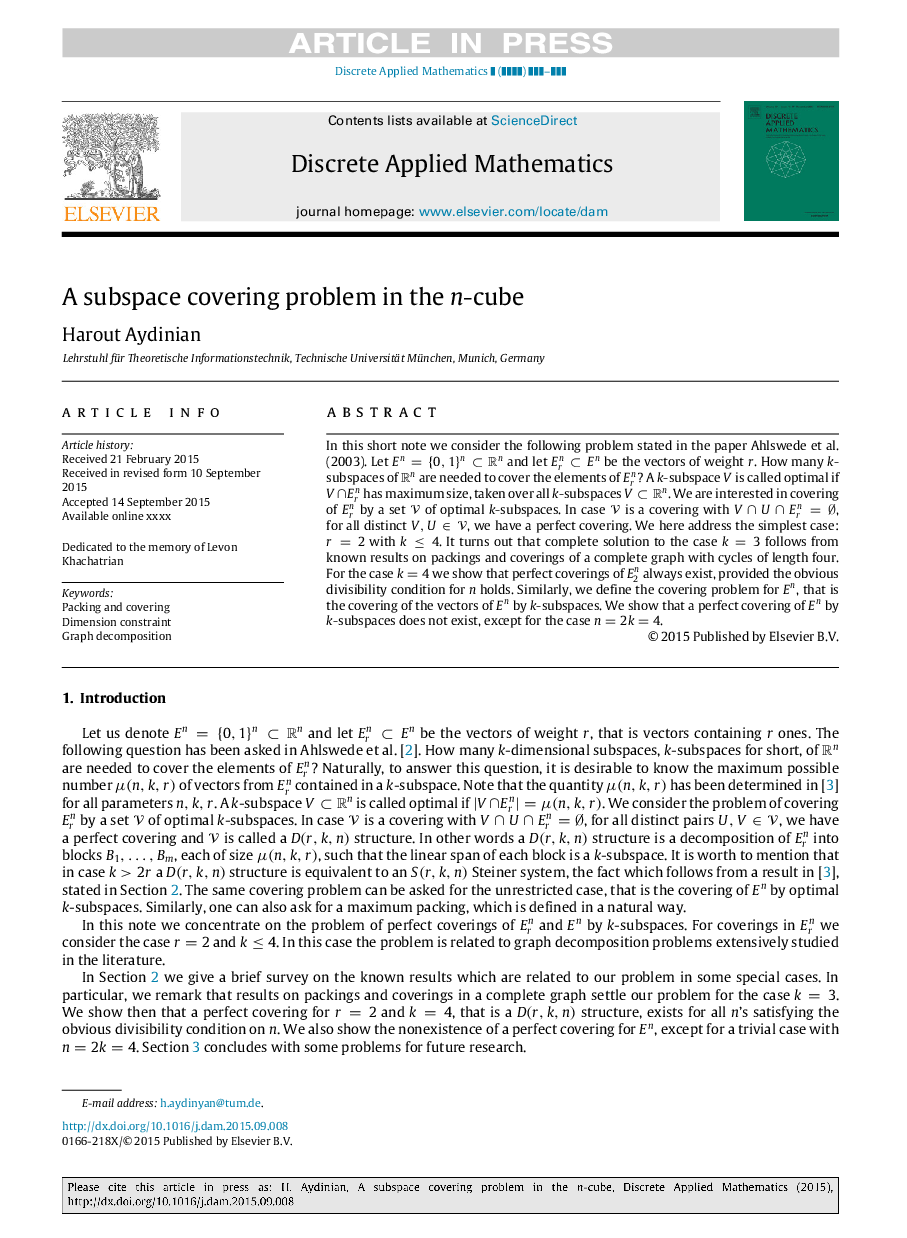| Article ID | Journal | Published Year | Pages | File Type |
|---|---|---|---|---|
| 4949833 | Discrete Applied Mathematics | 2017 | 5 Pages |
Abstract
In this short note we consider the following problem stated in the paper Ahlswede et al. (2003). Let En={0,1}nâRn and let ErnâEn be the vectors of weight r. How many k-subspaces of Rn are needed to cover the elements of Ern? A k-subspace V is called optimal if Vâ©Ern has maximum size, taken over all k-subspaces VâRn. We are interested in covering of Ern by a set V of optimal k-subspaces. In case V is a covering with Vâ©Uâ©Ern=0̸, for all distinct V,UâV, we have a perfect covering. We here address the simplest case: r=2 with kâ¤4. It turns out that complete solution to the case k=3 follows from known results on packings and coverings of a complete graph with cycles of length four. For the case k=4 we show that perfect coverings of E2n always exist, provided the obvious divisibility condition for n holds. Similarly, we define the covering problem for En, that is the covering of the vectors of En by k-subspaces. We show that a perfect covering of En by k-subspaces does not exist, except for the case n=2k=4.
Keywords
Related Topics
Physical Sciences and Engineering
Computer Science
Computational Theory and Mathematics
Authors
Harout Aydinian,
